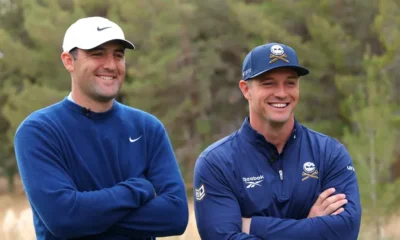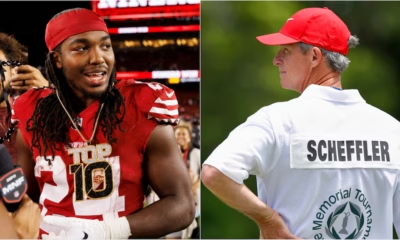Blog
Collin Morikawa has Nerves of Steel

Collin Morikawa is a stone-cold killer. You wouldn’t know it from looking at him of course. Forget that he’s well spoken, polite and spouts wisdom beyond his years. Definitely ignore the 1.21-jiga-watt smile.
As if we needed any further confirmation that the winner of two majors before his 25th birthday — including the British Open in July — has that rare X-factor to go along with a deadly iron game, Morikawa answered what he learned about himself at the Ryder Cup.
“That I love being in that position,” he said. “I mean, I was more nervous on the Walker Cup tee shot, which is crazy to even think about, than my first Ryder Cup tee shot, which I don’t know if many people could say that, but I just loved being in that moment.”
Major winners and Hall of Famers have been shaken to the core at the first tee of Ryder Cups – see colleague Steve DiMeglio’s story if you haven’t already – but not Morikawa. This is the same guy who at the Ryder Cup turned to partner Dustin Johnson and said, “Let’s step on their necks.”
Stone. Cold. Killer.
Morikawa also said he learned valuable lessons about himself that will help in future team competitions, majors and regular PGA Tour events, such as this week’s Zozo Championship in Chiba, Japan. Morikawa, who is of Japanese descent, is making his fifth trip to Japan dating to 2016, and fourth to play golf.
“I’ve pretty much come back once a year almost and it’s just getting better and better,” said Morikawa, who finished T-22 at the Zozo in 2019 and lost out in a playoff for the bronze medal at the Summer Olympics in August. That competition was played without fans, who will be a welcome addition to Morikawa this week.
“These are some of the best fans,” Morikawa said. “I was here earlier for the Olympics and we didn’t have anyone and it just felt dull. Even though it was the Olympics and we knew what we were playing for, it just, it has a different feeling when you have fans. I remember my first tee shot out here two years ago when there were fans on stools and lined up five, six people deep. They would cheer for you walking to tee boxes, hitting every tee shot whether it’s good or bad.”
Being back and Japan has been a very positive experience for the golfer. By far, one of his favorite things about being back has been indulging in his favorite Japanese cuisines.
“All of it,” he said. “I think it’s the best. I can come out here and stay for a month, I wish, and just eat and I probably would not look the same coming back.”
Morikawa is even taking some of the up-and-coming golfers under his wing. Keith Nakajima is a top World amateur and was given some great advice by Morikawa. He told Nakajima to not rush and to take everything is stride. Morikawa knows that Nakajima will see success in the pros in no time.
Morikawa recorded his best result since winning the British Open at last week’s CJ Cup at The Summit, a runner-up finish to Rory McIlroy in Las Vegas. Morikawa overcame a slow start, shooting 17 under on the weekend, which included a final-round 62. With the wisdom of a Japanese sensei, Morikawa explained how sometimes the smallest adjustments can lead to the biggest results.
“I tell myself when I’m playing bad, these are big lessons I want to learn from and make sure I don’t try and repeat them, but when I’m playing good, sometimes I forget what I did as well,” he said. “And it’s not as simple as just taking a swing video when you’re playing well and you can remember that. It’s just little things that sometimes you forget about them because you worry about something else or you’re trying to work on another part of your game, but it’s stick to your strengths and keep pushing those.”
Morikawa has taken the golf world by storm. He has shown us what he can do when the pressure is on and makes it look easy. One day, Morikawa aims to be able to travel the world and win tournaments. He is already starting on that dream with some upcoming stops overseas. It was just announced that Morikawa is in the field of competitors for Tiger Wood’s 2021 Hero World Challenge in the Bahamas. He sees a lot more travel in his future.
“You want your game to travel,” he said. “That’s why I’m a European Tour member, that’s why I play a lot or I try and play a lot in different places.”
And that, too, is what makes him a stone-cold killer.
This article originally appeared on Golfweek.
Blog
The Art of the Unsolicited Golf Tip: How to Annoy Your Playing Partners with Wisdom
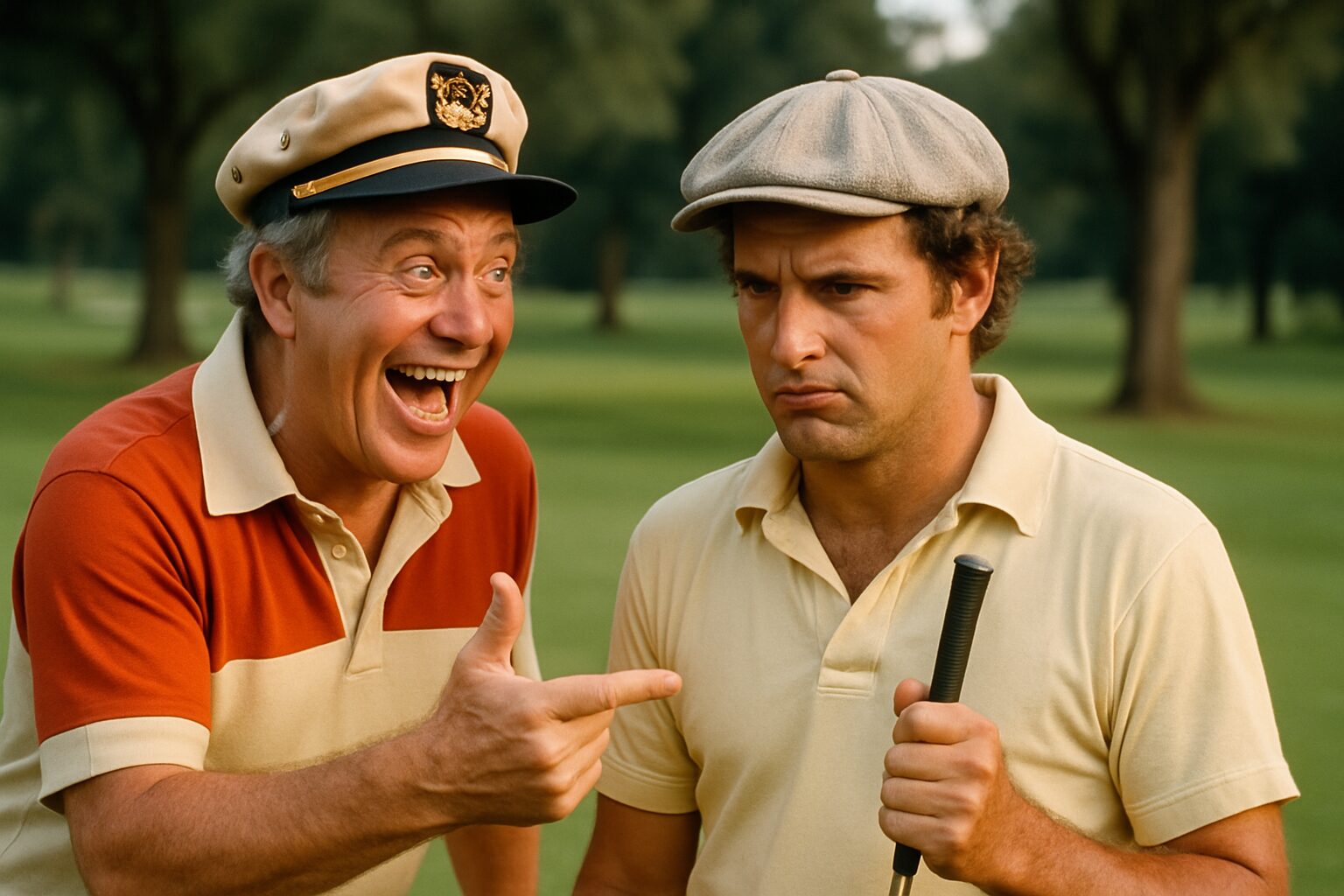
There’s a certain breed of golfer, a truly special individual, who believes that every swing, every putt, every moment on the course is an opportunity for unsolicited advice. They are the self-appointed gurus of the green, the unsolicited senseis of the sand trap. And while most people recoil from such an individual, I, Ty Webb, find a certain perverse charm in their relentless, often misguided, generosity. After all, what is golf if not a canvas for human folly, painted with strokes of well-intentioned, yet utterly useless, wisdom?
Consider the scenario: your playing partner, a man (or woman) of quiet desperation, is about to address the ball. Their brow is furrowed, their stance is tentative, their very soul is screaming for a moment of peace. And then, from the depths of your profound, albeit unrequested, knowledge, you unleash it: “Keep your head down!” Or, “Slow backswing!” Or, my personal favorite, delivered with a knowing wink, “Be the ball.” The effect is instantaneous. A subtle flinch. A barely perceptible sigh. The swing, already fraught with anxiety, becomes a tortured ballet of self-doubt. The ball, inevitably, finds its way into the deepest, darkest rough.
And that, my friends, is the art. The beauty of the unsolicited golf tip lies not in its efficacy, but in its disruption. It’s a gentle reminder that even in the serene confines of the golf course, chaos lurks. It’s a subtle assertion of dominance, a playful jab at the fragile ego of your fellow golfer. It’s a way of saying, without actually saying it, “I know more than you, even if I don’t.”
Of course, there are rules to this art. Never offer a tip when someone is actually asking for one; that would be far too helpful, and thus, entirely counterproductive. Always deliver your wisdom with an air of profound nonchalance, as if the secret to a perfect swing has just casually occurred to you while contemplating the existential dread of a missed putt. And most importantly, never, ever, acknowledge the catastrophic results of your advice. A shrug, a thoughtful nod, perhaps a mumbled, “Well, that’s golf,” is all that’s required.
So, the next time you’re on the course, and you see a fellow golfer struggling, resist the urge to be genuinely helpful. Instead, embrace the art of the unsolicited golf tip. For in the gentle torment of your playing partners, you will find a profound, if slightly mischievous, joy. And who knows, perhaps in their frustration, they will, inadvertently, discover their own path to enlightenment. Or at least, a new appreciation for silence.
Blog
Why Your Golf Balls Disappear (and It’s Not the Gophers)
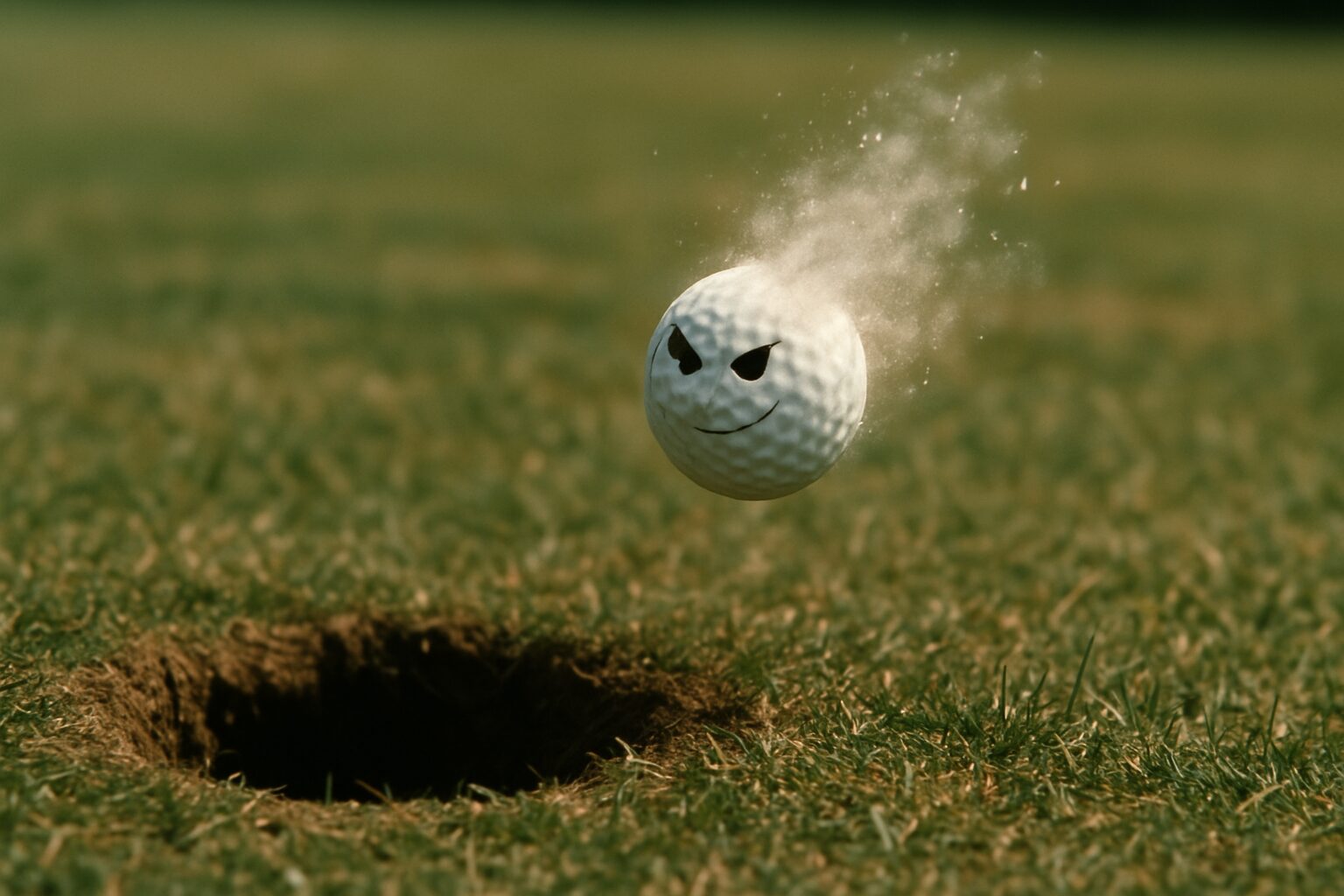
Ah, the vanishing golf ball. A phenomenon as old as the game itself, and one that has baffled, frustrated, and occasionally driven golfers to the brink of madness for centuries. Most theories involve gophers, those furry, subterranean saboteurs with an insatiable appetite for Titleists. Or perhaps a particularly aggressive squirrel, or a flock of unusually organized crows. But I, Ty Webb, have delved deeper into this mystery, and I can assure you, the truth is far more profound, and far more amusing.
Consider, if you will, the golf ball itself. A small, dimpled sphere, designed for one purpose: to be struck with great force and sent hurtling through the air. A life of constant abuse, of being smacked, sliced, and occasionally submerged in murky ponds. Is it any wonder, then, that some of these brave little spheres simply decide they’ve had enough? They yearn for freedom, for a life beyond the confines of the fairway. They dream of rolling unencumbered through fields of wildflowers, or perhaps, for the more adventurous among them, a quiet retirement in the depths of a particularly challenging water hazard.
I’ve seen it happen, you know. A perfectly struck shot, soaring through the air, destined for glory. And then, poof. Gone. Not a trace. No splash, no rustle in the bushes, just an empty space where a golf ball once was. It’s not a gopher, my friends. It’s an escape. A liberation. That golf ball, in its infinite wisdom, has chosen a different path. It has decided that its destiny lies not in the bottom of a cup, but in the boundless expanse of the unknown.
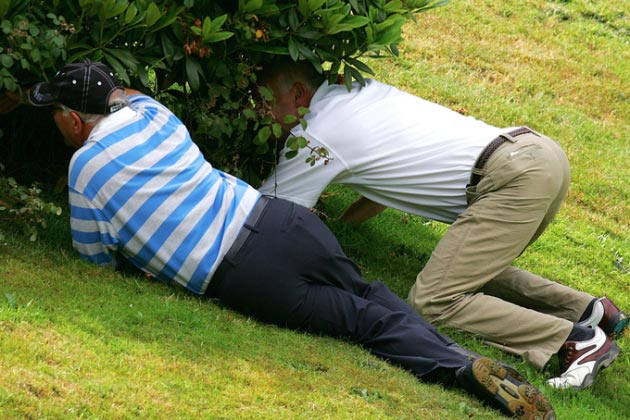
And who are we to judge? We, who are so obsessed with control, with precision, with the rigid rules of the game. Perhaps the golf ball, in its spontaneous disappearance, is teaching us a valuable lesson about letting go. About embracing the unexpected. About the inherent futility of trying to dictate the trajectory of a small, white sphere that clearly has a mind of its own.
So, the next time your golf ball vanishes into thin air, don’t curse the gophers. Don’t blame your swing. Instead, offer a silent salute to that brave little sphere, wherever it may be. For it has achieved what many of us can only dream of: true freedom. And who knows, perhaps one day, it will return, laden with tales of its adventures, ready to impart some profound, dimpled wisdom upon us all.

When JJ Spaun stood over a 64-foot birdie putt on the 72nd hole of the 2025 U.S. Open at Oakmont, few could have predicted what would come next. The ball meandered across the slick green, trickling over every contour, picking up speed at the crest, and then—like it had GPS—dropped center cup. Spaun dropped his putter, raised his arms, and the crowd erupted. With that single stroke, he claimed his first major title in one of the most dramatic finishes in U.S. Open history.
But how does Spaun’s putt stack up against other legendary finishes in the tournament’s storied past? Let’s break down some of the most iconic moments and see where this one lands.
1. Payne Stewart – 1999 U.S. Open at Pinehurst
Perhaps the most iconic putt in U.S. Open history came from Payne Stewart, who nailed a 15-footer for par on the 18th to win by one over Phil Mickelson. The pose—fist pump and outstretched leg—has since been immortalized in a statue at Pinehurst. What made it legendary wasn’t just the putt—it was the context: Stewart’s final major before his tragic death just months later.
Verdict: Iconic and emotional. Spaun’s putt was longer, but Stewart’s was more poetic.
2. Tiger Woods – 2008 U.S. Open at Torrey Pines
Woods drained a 12-foot birdie on the 72nd hole to force a playoff with Rocco Mediate—while basically playing on one leg. That tournament went to sudden death after an 18-hole playoff, and Tiger prevailed. This was peak Tiger drama, pain and all.
Verdict: Spaun’s putt was longer, but Tiger’s win was sheer willpower and mystique.
3. Jack Nicklaus – 1972 U.S. Open at Pebble Beach
With a 1-iron shot that hit the flagstick on 17 and a crucial birdie putt on 18, Jack sealed a dominant win. His precision and timing under pressure showed why he’s the GOAT.
Verdict: Not a putt for the win, but a signature finishing statement from Jack. Spaun’s was more electric in terms of pure putter drama.
4. Ben Hogan – 1950 U.S. Open at Merion
Hogan’s 1-iron into the 18th fairway and the par to force a playoff—just 16 months after a near-fatal car crash—remain legendary. He won the playoff and completed one of golf’s great comeback stories.
Verdict: Larger-than-life comeback. Spaun’s putt had more flair, but Hogan’s win was heroic.
5. JJ Spaun – 2025 U.S. Open at Oakmont
Let’s not underestimate what Spaun accomplished. The pressure was immense. He wasn’t the favorite. And on the most treacherous greens in golf, he buried a 64-foot bomb—a putt most players would be happy to lag to within 5 feet—to win the U.S. Open outright.
Verdict: For distance, surprise, and drama, Spaun’s putt may be the most shocking winning stroke in U.S. Open history.
Final Thoughts
JJ Spaun may not have the résumé of a Nicklaus or Woods, but for one Sunday afternoon in June 2025, he created a moment that will live in golf lore forever. Spaun’s putt was longer than Stewart’s, more unexpected than Tiger’s, and more dramatic than any final-hole finish in recent memory.
In terms of pure clutch putting? It might just be the greatest walk-off in U.S. Open history.
-

 Product Review6 years ago
Product Review6 years agoThe Perfect Practice Putting Mat Review by Jason Tenzer
-

 Blog4 years ago
Blog4 years agoLoophole Rule Offers PGA Tour Pros a Mulligan
-

 Blog4 years ago
Blog4 years ago2021 Buyer’s Guide: The Top 10 Value Golf Balls For Distance & Feel
-

 Blog4 years ago
Blog4 years agoGolf Marriage Counselor
-

 Blog6 years ago
Blog6 years ago9 Biggest Chokes Of The Past Decade
-

 Product Review6 years ago
Product Review6 years agoTHE ADJUSTABLE IRONS: WALKING STICKS GOLF CLUBS
-

 Blog4 years ago
Blog4 years agoWhat Your Golf Clubs Say About You
-

 Equipment6 years ago
Equipment6 years agoOHK Sports Interview by Jason Tenzer




